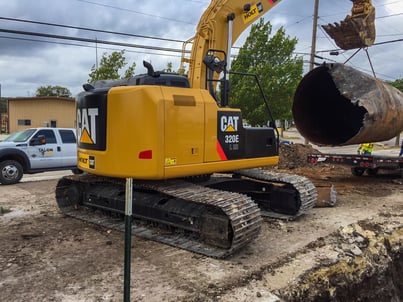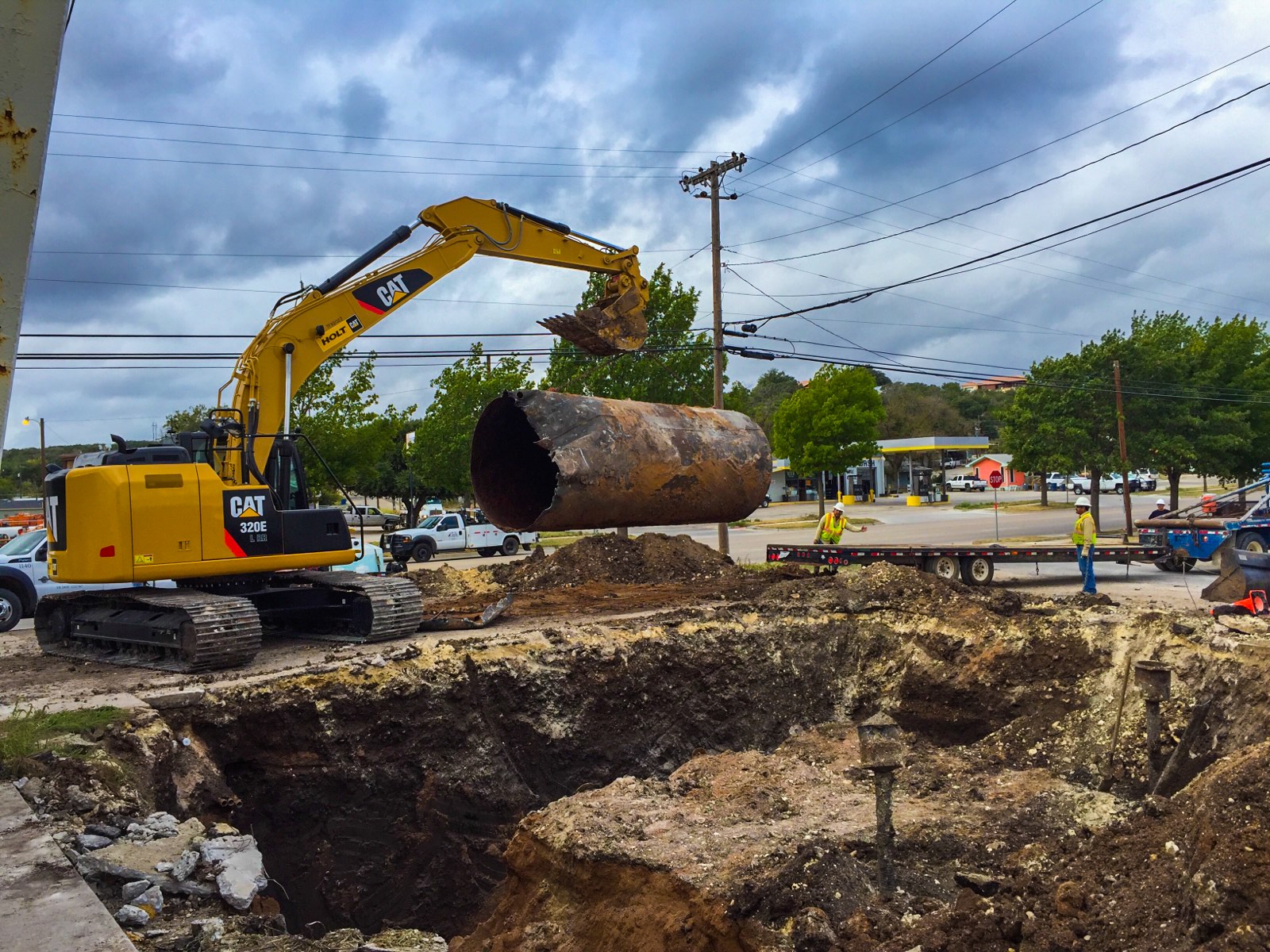Groundwater is the principal source of drinking water for over half of the population of the United States. And one of the primary threats to the purity of groundwater comes from leaks in the over 500,000  underground storage tanks (UST) scattered across the country, many of which are holding petroleum and other hazardous substances.
underground storage tanks (UST) scattered across the country, many of which are holding petroleum and other hazardous substances.
Many land owners are aware of the existence of USTs on their property, but not really sure if they are in compliance with both TCEQ and EPA guidelines aimed at preventing leaks & spills which could contaminate groundwater. Determining your compliance status is the first-step in deciding if you need to consider underground storage tank removal.
Core UST Regulations
The federal Environmental Protection Agency (EPA) establishes national provisions for determining basic UST safety measures, and then works closely with state authorities to create local priorities that reflect compliance specifics they are in a position to be most familiar with.
The basic provisions established by the EPA concerning groundwater protection from USTs include:
-
Corrosion protection – calling for all metal UST components that are in contact with the ground to be protected from corrosion, since this can result in compromised tanks leaking.
-
Overfill protection – mandating the presence of devices on USTs that either restrict product flow, or alert the delivery personnel when a tank is is near to being full. This also requires USTs to have automatic shutoff devices installed.
-
Spill protection – requiring that USTs have spill buckets and other containment equipment in-place to contain all overfill and spillage issues on tanks containing more than 25 gallons.
Under this basic umbrella of guidelines, though, there are 38 states with EPA approved programs for regulating their own local USTs. Texas is among these states.
Are You in State Compliance?
Once a land owner is aware of EPA guidelines pertaining to any USTs located on their property, they still need to familiarize themselves with state specific regulations pertaining to this equipment. Ultimately, this information will help landowners determine if hey need to consider underground storage tank removal, and what is involved in doing so.
The Texas Commission on Environmental Quality (TCEQ) is tasked with ensuring EPA regulations for USTs are being followed. The main elements of state compliance include:
-
Registration – each UST must be registered with the TCEQ, even if it is unused and empty.
-
Proof of financial assurance – operators and owners of USTs must validate they have the financial means to conduct corrective activities in the event of spills or leakage.
-
Labeling – UST tank fill pipes must be clearly identified with a label
-
Work notifications – any plan for underground storage tank removal must be submitted to the TCEQ a least 30 days prior to the commencement of work.
The bottom line is that the presence of USTs on any property creates legal obligations and responsibilities for the owner. Even when land owners decide upon underground storage tank removal, there are established, legally binding, protocols in-place for how any contemplated work must be undertaken in-order to assure protection of vital public groundwater resources.
Do you need help with your underground storage tank? If so, contact Talon/LPE today. We will complete the paperwork, perform the removal, and provide regulatory correspondence.


